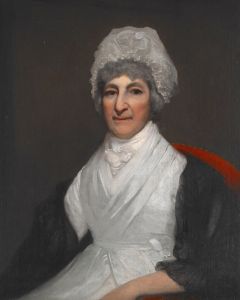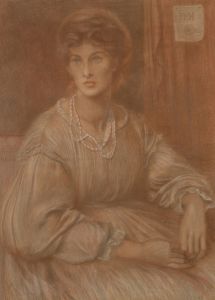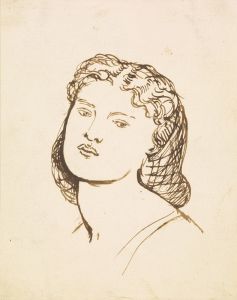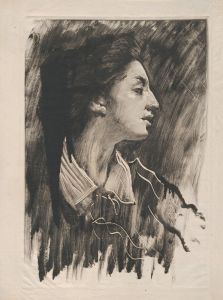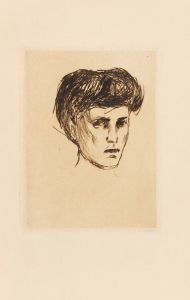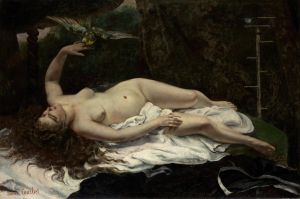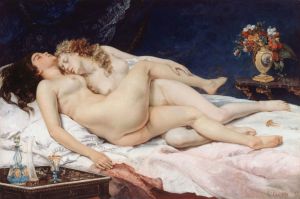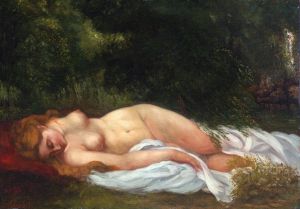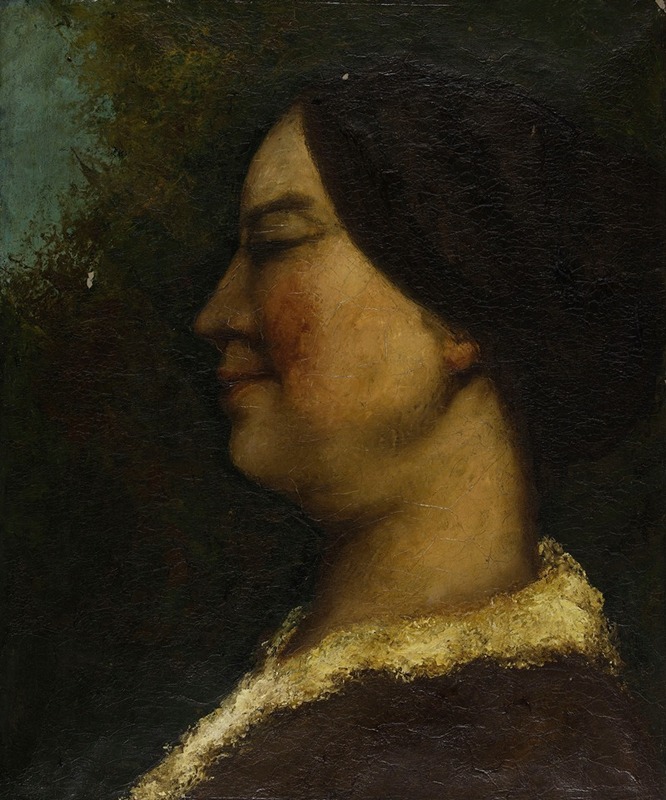
Portrait de femme
A hand-painted replica of Gustave Courbet’s masterpiece Portrait de femme, meticulously crafted by professional artists to capture the true essence of the original. Each piece is created with museum-quality canvas and rare mineral pigments, carefully painted by experienced artists with delicate brushstrokes and rich, layered colors to perfectly recreate the texture of the original artwork. Unlike machine-printed reproductions, this hand-painted version brings the painting to life, infused with the artist’s emotions and skill in every stroke. Whether for personal collection or home decoration, it instantly elevates the artistic atmosphere of any space.
Gustave Courbet's "Portrait de femme" is a notable work by the renowned French painter, who was a leading figure in the Realism movement of the 19th century. Courbet, born in 1819 in Ornans, France, was known for his commitment to painting realistic scenes and his rejection of the idealized subjects that dominated the art world at the time. His works often depicted ordinary people and everyday life, challenging the conventions of the art establishment.
"Portrait de femme" exemplifies Courbet's dedication to realism and his skill in capturing the essence of his subjects. Although specific details about this particular painting are limited, it is consistent with Courbet's broader oeuvre, which often focused on portraying individuals with a sense of authenticity and depth. Courbet's portraits are characterized by their attention to detail, the use of rich, earthy tones, and a focus on the individuality of the sitter.
Courbet's approach to portraiture was innovative for his time. He sought to depict his subjects as they were, without embellishment or idealization. This approach was part of a broader movement in art that sought to represent the world truthfully, without the influence of romanticism or classicism. Courbet's work was often controversial, as it challenged the traditional norms of beauty and subject matter in art.
The Realism movement, of which Courbet was a central figure, emerged in France in the mid-19th century as a reaction against the romanticized and often exaggerated depictions of life that were prevalent in art. Realists like Courbet aimed to portray the world as it was, focusing on everyday scenes and ordinary people. This movement was closely tied to the social and political changes of the time, including the rise of the middle class and the increased interest in social issues.
Courbet's "Portrait de femme" likely reflects these themes, capturing the personality and presence of the woman depicted with a sense of immediacy and honesty. His ability to convey the character and mood of his subjects made his portraits particularly compelling. Courbet's technique often involved a careful study of his subjects, allowing him to render them with a lifelike quality that was both striking and intimate.
Throughout his career, Courbet faced both acclaim and criticism for his work. His commitment to realism and his refusal to conform to the expectations of the art establishment made him a controversial figure. However, his influence on the development of modern art is undeniable. Courbet's work paved the way for future generations of artists who sought to depict the world with honesty and integrity.
In summary, while specific information about "Portrait de femme" is limited, the painting is representative of Gustave Courbet's broader artistic vision and his role in the Realism movement. His dedication to portraying his subjects with authenticity and depth continues to be celebrated as a significant contribution to the history of art.






